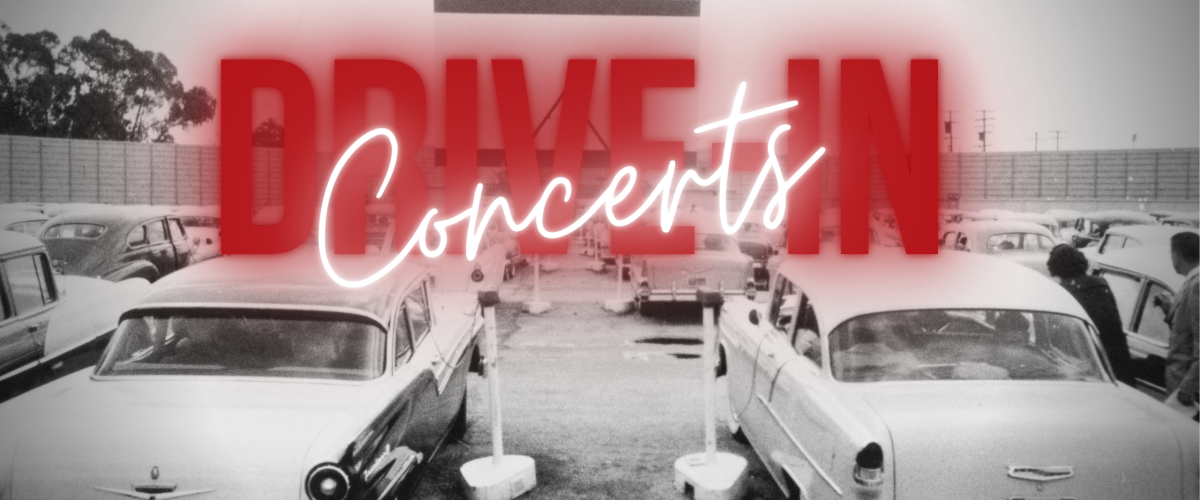Drive-In Concerts are now popular as a means for musicians to deliver their live music to fans in the era of the Coronavirus pandemic. The Drive-In concert is one model for delivering a music concert experience to fans. We’ve highlighted other approaches as part of our series on the different approaches venues and promoters are using to deliver live music in a safe environment to fans.
Since public health regulations to control the virus first started back in April of this year, musicians and other entertainers alike have been trying to find new and innovative ways to be able to perform for their fans. Most entertainers have taken to social media platforms such as Twitch, Facebook, and YouTube for their live stream capabilities. As public health social distancing rules are adjusted to allow some reopening of the economy, outdoor sites have become the venue of choice for live music events. The repurposing of drive-in movie theaters as concert venues is one of the exciting developments to occur as the music industry adapts to the today’s reality. Drive-In Concerts are now a trendy new way see artists perform and to enjoy real, live entertainment.
Back in the ’60s, the drive-in movie was popular because people wanted a reason to be able to socialize with their friends without the need to keep quiet during the movie. Of course, those in the back row of the drive-in theater had a different definition of “socialize.”
The drive-in’s peak popularity came in the late 1950s and early 1960s, particularly in rural areas, with over 4,000 drive-ins spread across the United States in 1958. Their numbers began to decline during the seventies. Today there are only 321 drive-in movie theaters in the U.S., according to a survey on online statistics portal Statista. Five states have no drive-in movies theaters.
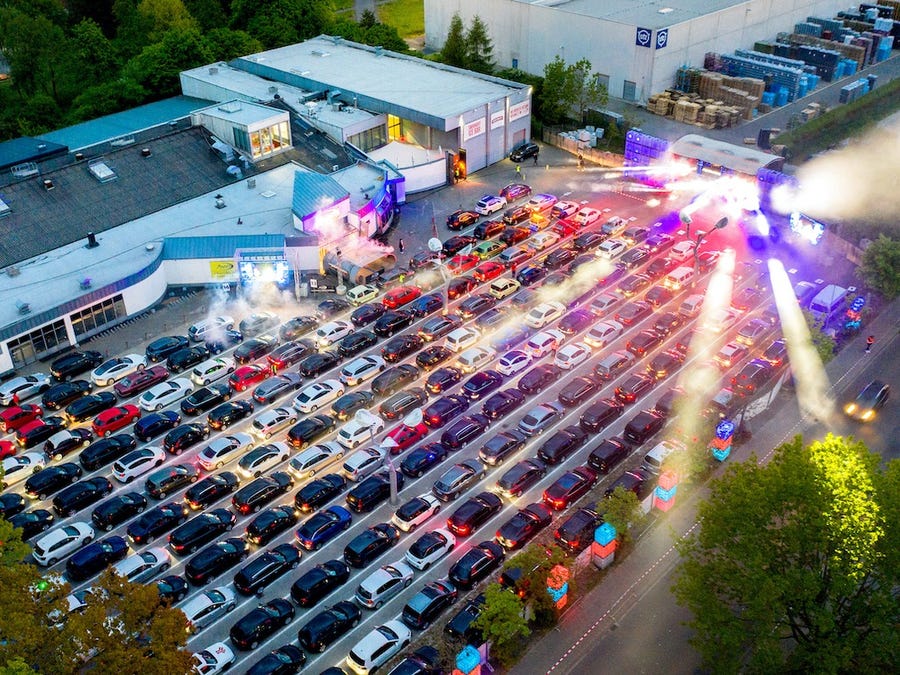
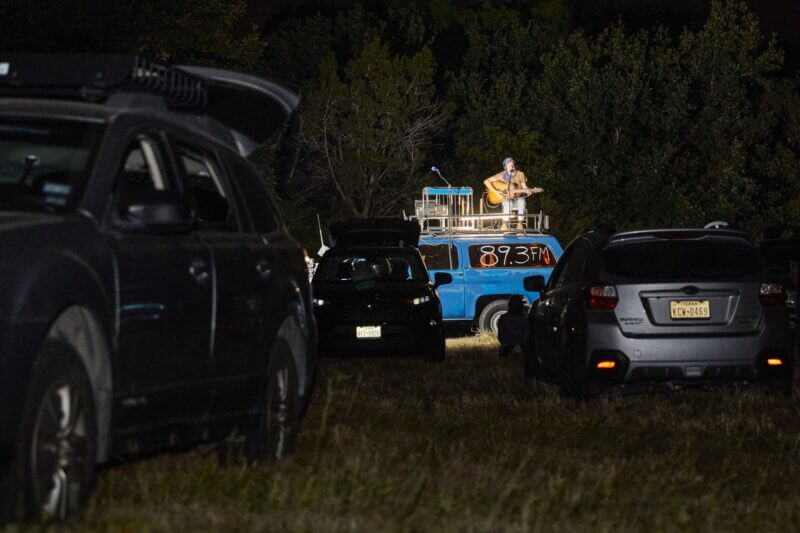
Artists are increasingly turning to drive-in concerts as the concept has evolved. Some artists that have already taken to the concept are Garth Brooks, Blake Shelton, Brad Paisley, Alan Jackson, Eli Young Band, Keith Urban, Tracy Byrd among others.
However, with any new idea, there’s a lot of learning taking place in how to stage concerts in such a setting. How will fans react? How do promoters comply with public health regulations and social distancing? How can performers deliver the best fan experience?
Fan behavior has been a challenge for many drive-in concerts to be able to follow public health guidelines for these events. Today we have multiple approaches for drive-in concerts. The following are some examples of different models for drive-in concerts.
 More Than One Way to Do Drive-In Concerts
More Than One Way to Do Drive-In Concerts
The Pre-Recorded Show
The first news of a large drive-in concert I saw was in early May. When I investigated further, I discovered that it was nothing more than a pre-recorded performance that was being played at multiple drive-in locations on the same night. I was confused as to why such an event would be billed as a “live” performance. Encore Drive-In Nights is a promoter using such an approach. They showcase major music stars such as Blake Shelton and Metallica with performances filmed exclusively for drive-in theaters across North America.
This version of the drive-in “concert” seems to be the easiest route, but should also be reserved only for A-list celebrities as you would be hard-pressed to find people willing to pay concert prices for a pre-recorded screening of a performance. However, if you’re famous enough to pull it off and still get a crowd, the production seems like a piece of cake.
Using a Green Screen for Drive-In Performances
If you’re working with a DJ or loop-artist that doesn’t require a full band or full stage set up, then a green screen set up for live video can work really well. I had the opportunity to attend the last show of Marc Rebillet’s 2020 Drive-In Tour. It was a very unique and exciting experience for me personally.
Instead of a stage in front of the projector screen, Marc’s stage was at the back of the venue near his tour bus in a make-shift green room. In this green room, he was able to house all the equipment he needed to create and loop his beats. The set up allowed him to play with artistic and well thought out backgrounds that corresponded with the music he was making. He and his green screen created backgrounds were projected on to the drive-in theater’s screen.
To recreate a drive-in concert experience like this one, you would have to have a very skilled production team as he did. However, it requires minimal staff and equipment. The logistics involved with it is fairly easy to handle, all while keeping the staff and patrons safe and in compliance with public health requirements.
Minimalist Approach to Drive-In Music Concerts
These days it’s not always easy to bring together a full band and crew for any kind of concert. Keith Urban did something really cool in Tennessee for the local healthcare workers. Unlike a pre-recorded show, he appeared and played live for the audience. To simplify things and create social distancing, he only brought two other band members on stage. For his performance, it was Keith, his keyboard player, and his sound guy who was able to add the remaining instrument tracks for the songs he sang.
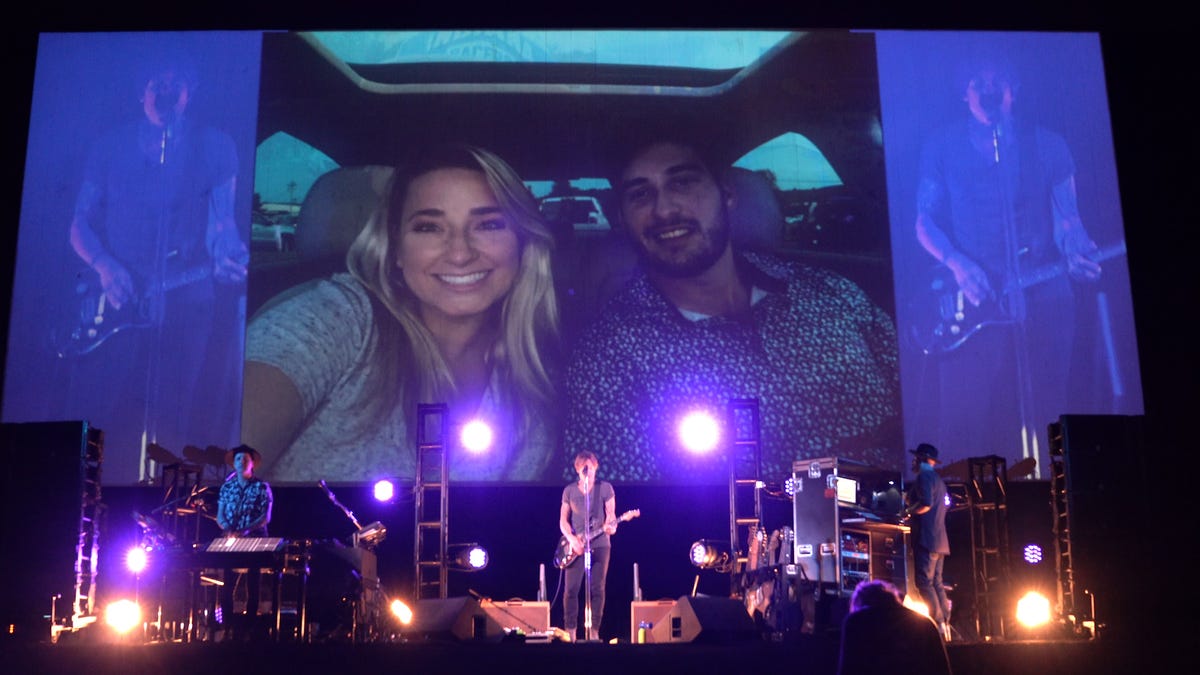
Using a Full Band for Drive-In Concerts
What fans prefer is to see their favorite artist backed by his or her full band. That involves putting a full stage in place high enough so that the audience can see the performers from their cars. In addition, the performance can be projected on to the movie screen of the drive-in theater as well, much like traditional large venue concerts. This approach is the most ideal for fans but has experienced problems. In some drive-in concerts, fans have massed in front of the stage ignoring social distancing and mask requirements. The result has been condemnation by public health officials and officials regarding the failures to follow these requirements.
These concerts can be done safely and steps can be taken to keep people from leaving their cars and approaching the stage. TSE Entertainment booked Tracey Byrd for the Weber County UNFAIR pickup truck concert. For this drive-in concert, Tracy Byrd performed live in front of the projector screen with his whole band. So apart from missing out on the shoulder rubs and dirty feet, the audience at this year’s Weber County Unfair were able to enjoy a drive-in concert that offered a true live concert experience for those in the audience.
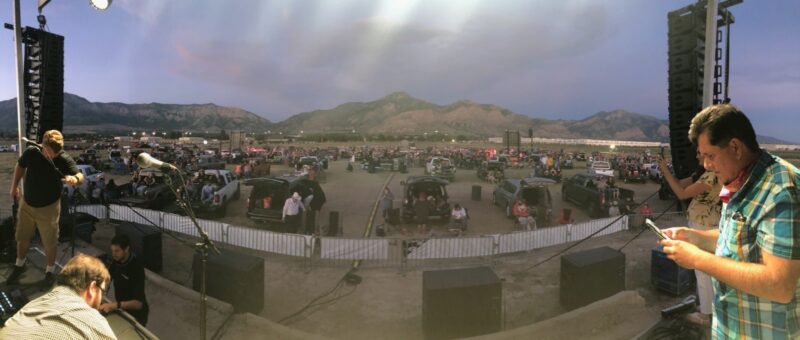
Here’s Wesley Dean’s comments as one of those attending the concert. “Had a very excellent time. Tracy Byrd is an awesome performer. Definitely goin again.”
Whatever approach you decide to use for drive-in concerts, there are specific actions you can do to keep patrons, performers, and staff safe so these types of live music events can continue to take place.
Adhere to Social Distancing and Public Safety Regulations in Producing Drive-In Concerts
One thing all drive-in concerts have in common is the goal of delivering a live music experience while still minimizing the risk for concert-goers to contract COVID-19. While we’ve seen a number of different safety measures taken, there are some that are more essential at every drive-in concert and should be practiced when hosting your own drive-in concert.
Educate Patrons on What to Expect
If you want those that attend the concert to abide by the rules, make every effort to educate them before they purchase tickets and attend the event. Reinforce the education at every opportunity. You cannot expect people to abide by rules that they don’t know about.
Approach to Sound: Broadcast to Car Stereos
I’m mentioning this one first for a reason; to control fan behavior. The natural tendency of fans at a concert is to get up close to the performers. Patrons will gather in masse in front of the stage singing and dancing to the music. All public health measures go out the window when that happens.
Of course, you can use barricades far from the stage to help with this tendency. A better approach is to have the concert sounds originating from their car stereo. By leaving their vehicle they also leave the concert sound system. This is probably the most important of the safely measures to control crowd behavior. It’s important that concertgoers be incentivized to stay in or around their vehicle for a better concert experience. You don’t want to deal with crowd control issues like that of The Chainsmokers drive-in concert in the Hamptons.
It gained a lot of negative publicity for the number of people that chose to leave their vehicles to stand in front of the stage and listen and dance to the music. You can avoid fans leaving their vehicles if the audience has no choice but to listen to the performance from their own cars.
Limit Vehicle Occupancy
We’ve seen this done a few different ways, but regardless of how you choose to do it, the objective should be to limit how many people can be in a vehicle comfortably. Too many people in a vehicle means that some people will undoubtedly get out of the vehicle during the concert. Once outside, they may wander around putting themselves or others at risk. Most promoters charge by the car, with a 4 or 6-person limit per vehicle.
Vehicle Spacing
Because many people will opt to sit outside their cars or in the beds of trucks, you should plan for adequate spacing between vehicles. During the drive-in concert that I attended, some people brought lawn chairs and chose to open their back hatch and expose their sound system while sitting outside. Plan for these scenarios with therefore adequate spacing between vehicles.
Face Masks Required When Leaving Vehicle
Obviously, attendees of drive-in concerts don’t need to wear their facemasks while in and around their car with adequate spacing. If they need to leave their car to visit the bathroom or other permitted activities, they are required to wear a face covering. Some Drive-In Concerts will allow patrons to order food with an app and attendants will deliver the food to their vehicle.
Limit Bathroom Access
Restroom facilities should have different entrance and exits if possible. The number of people in each restroom should also be limited. This is probably best done by having a staff member sit by or in the bathroom monitoring how many people are occupying it at one given time. This way they can politely let the next person know that they must wait for someone to come out before they can enter. Attendants should make a point of routinely cleaning the restrooms throughout the concert.
Provide Adequate Security Staff
It’s critical for future drive-in concerts that they take place safely. Enough security needs to be in place in case fans start practicing unsafe behaviors. Even if rules are prominently placed and repeated, fans are people and often break the rules. It might feel like a buzzkill, but it’s important for everyone’s safety that any unsafe behaviors be addressed quickly.
Along with these listed, there are a number of other measures you can take such as temperature checks upon entry and touchless payment options. As long as you cover the basics to keep everyone safe and have them follow the rules, you shouldn’t have any problems producing your own live, drive-in concerts during this pandemic.
Related Post:
